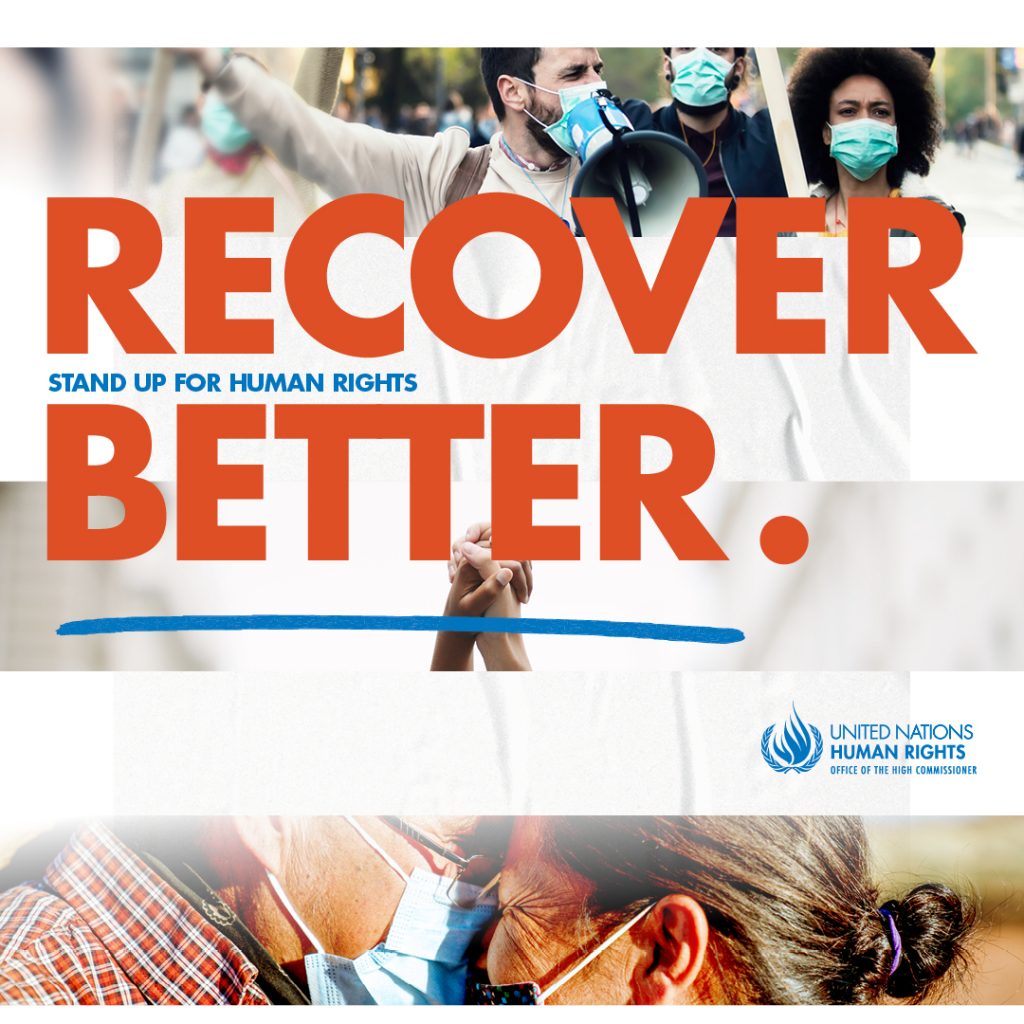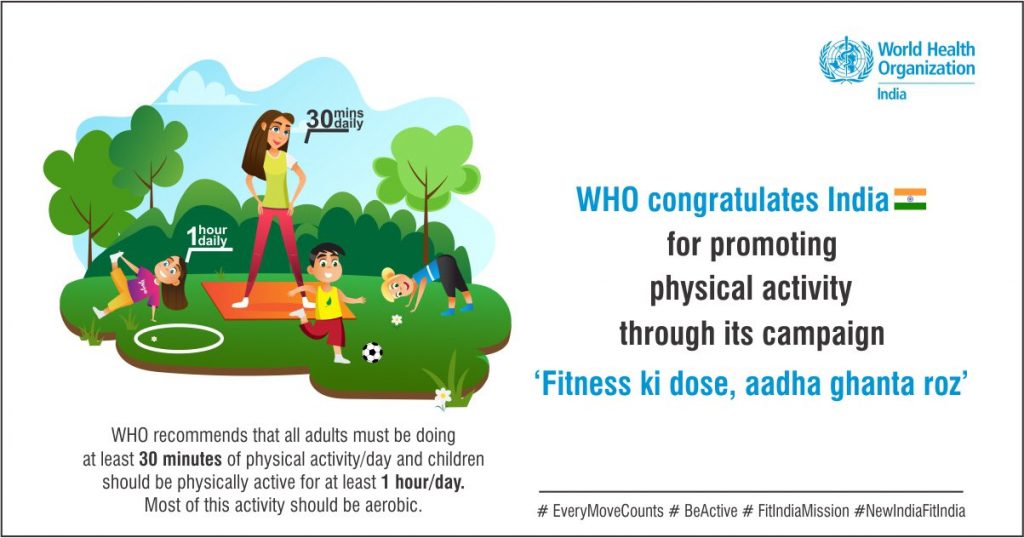Contents
- Human Rights Day
- Novel species of Muraingrass
- Aerosols
- Fitness Ka Dose Aadha Ghanta Roz campaign
HUMAN RIGHTS DAY
Focus: GS2 ;Statutory, regulatory and various quasi-judicial bodies.
Why in News?
Human Rights Day was celebrated by the National Human Rights Commission (NHRC) in New Delhi today.
About Human Rights Day
- The Human Rights Day is celebrated annually across the world on 10 December every year.
- The date was chosen to honor the United Nations General Assembly’s adoption and proclamation, on 10 December 1948, of the Universal Declaration of Human Rights (UDHR), the first global enunciation of Human Rights and one of the first major achievements of the new United Nations.

- In December 1948, UNESCO was the first United Nations agency to place the Universal Declaration at the heart of all its action, to promote it across the world through education and the media.
- The Human rights gain new meaning when they become a reality in the daily life of every single person in the world.

- In the context of the commemoration of the 70th anniversary of the Universal Declaration of Human Rights (UDHR), UNESCO brings to the fore the centrality of human rights protection in the history and the mandate of the Organization.
The Theme and Significance of Human Rights Day 2020
- The theme of Human Rights Day 2020 is Recover Better – Stand Up for Human Rights.
- This year’s theme is closely associated with the COVID-19 pandemic.
- It focuses on the need to build back better by ensuring human rights are central to recovery efforts.

- The Human rights are at the heart of the Sustainable Development Goals (SDGs), as in the absence of human dignity we cannot hope to drive sustainable development.
- The Human Rights are driven by progress on all SDGs, and the SDGs are driven by advancements on human rights.
About Human Rights to be Centre Post Covid World
- The COVID-19 crisis has been fueled by deepening poverty, rising inequalities, structural and entrenched discrimination and other gaps in human rights protection.
- Only measures to close these gaps and advance human rights can ensure we fully recover and build back a world that is better, more resilient, just, and sustainable.
- End discrimination of any kind: Structural discrimination and racism have fueled the COVID-19 crisis. Equality and non-discrimination are core requirements for a post-COVID world.
- Address inequalities: To recover from the crisis, we must also address the inequality pandemic. For that, we need to promote and protect economic, social, and cultural rights. We need a new social contract for a new era.
- Encourage participation and solidarity: We are all in this together. From individuals to governments, from civil society and grass-roots communities to the private sector, everyone has a role in building a post-COVID world that is better for present and future generations. We need to ensure the voices of the most affected and vulnerable inform the recovery efforts.
- Promote sustainable development: We need sustainable development for people and planet. Human rights, the 2030 Agenda and the Paris Agreement are the cornerstone of a recovery that leaves no one behind.
About Universal Declaration of Human Rights (UNDHR)
- It proclaimed under UNGA resolution 217 A in Paris, the declaration sets out, for the first time, fundamental human rights to be universally protected.
- It states that ‘All human beings are born free and equal in dignity and rights.
- They are endowed with reason and conscience and should act towards one another in a spirit of brotherhood.’
- It entitles everyone to all the rights and freedoms and prohibits slavery and slave trade in all forms.
- Other rights recognized under the declaration are right to a nationality, right against arbitrary arrest, detention or exile, right to seek asylum from prosecution, right to freedom of movement and residence, etc.
- The Universal Declaration is not a treaty, so it does not directly create legal obligations for countries.
- However, it is an expression of the fundamental values which are shared by all members of the International community.
Extra Info;-
About National Human Rights Commission (NHRC)
- It is a statutory body established on 12th October, 1993 under the Protection of Human Rights Act (PHRA), 1993.
- The Act also provides for the creation of the State Human Rights Commission as well.

- The NHRC Composition as follows;-
- The chairperson is a retired chief justice of India or a judge of the Supreme Court.
- They are appointed by the President on the recommendations of a six-member committee consisting of:
- Prime Minister (head)
- Speaker of the Lok Sabha
- Deputy Chairman of the Rajya Sabha
- Leaders of the Opposition in both the Houses of Parliament
- Union Home Minister.
- They hold office for a term of three years or until they attain the age of 70 years, whichever is earlier.
- The President can remove them from the office under specific circumstances.
- The Major issues tackled by NHRC are as follows;-
- Custodial Torture
- Right to Work and Labour Rights
- Extrajudicial Killings
- Arbitrary Arrest and Detention
- Excessive Powers of the Armed Forces and the Police
- Sexual Violence
- Conflict-Induced Internal Displacement
- Child Labour
- Manual Scavenging
- Violence and discrimination against Women, Children
- Lesbian, Gay, Bisexual, Transgender Rights
- Problems faced by Scheduled Castes and Scheduled Tribes, Religious Minorities, Persons with Disabilities.

Above image the difference between Human Rights Act 1993 Vs Human Rights Amendment 2019
NOVEL SPECIES OF MURAINGRASS
Focus: GS3 ;Conservation, environmental pollution and degradation, environmental impact assessment.
Why in News?
A tough novel species of Muraingrass identified by scientists in the plateaus of Western Ghats of Goa
About Novel Species of Muraingrass
- A new species of Indian Muraingrasses known for their ecological and economic importance, such as fodder, have been spotted by scientists in Goa in the Western Ghats, one of the four global biodiversity hotspots of India.
- The species has adapted to survive harsh conditions, low nutrient availability, and blossoms every monsoon.
- Globally 85 species are known from Ischaemum, of which 61 species are exclusively found in India.
- The Western Ghats have 40 species with the highest concentration of the genus.
- The Agharkar Research Institute (ARI), Pune, an autonomous institute of the Department of Science & Technology, has been exploring the biodiversity of the Western Ghats for last few decades.

- The team discovered a novel species named Ischaemumjanarthanamii from plateaus of Western Ghats of Goa.
- During their explorations on lateritic outcrops (habitats where portions of freely exposed bedrocks protrude above the soil level due to natural reasons) of Goa, the ARI team collected an interesting specimen of the species.
- Careful observations and critical morphological studies identified the species as a novel one.
- The species was named Ischaemumjanarthanamiiin honour of Prof. M. K. Janarthanam, Professor of Botany, Goa University, for his contribution to the Indian grass taxonomy and documentation of the floristic diversity of Goa state.
- The Ischaemumjanarthanamii grows on low altitude lateritic plateaus in the outskirts of Bhagwan Mahavir National Park, Goa.
- The vegetation is exposed to extreme climatic conditions like desiccation in drier months and soils with low nutrient availability.
- However, withstanding these, the species has adapted to survive harsh conditions and blossom every monsoon.
AEROSOLS
Focus: GS3 ;Conservation, environmental pollution and degradation, environmental impact assessment.
Why in News?
Aerosols in Indo-Gangetic Plain have led to increased incidents of high rainfall in the Himalayan foothills
About Aerosols
- An aerosol is a suspension of fine solid particles or liquid droplets in air or another gas.
- Aerosols can be natural or anthropogenic.
- Examples of natural aerosols are fog, mist, dust, forest exudates and geyser steam.
- Examples of anthropogenic aerosols are particulate air pollutants and smoke.
- The Aerosols are defined as a combination of liquid or solid particles suspended in a gaseous or liquid environment.
- In the atmosphere, these particles are mainly situated in the low layers of the atmosphere (< 1.5 km) since aerosol sources are located on the terrestrial surface.

- However, certain aerosols can still be found in the stratosphere, especially volcanic aerosols ejected into the high altitude layers.
- The origin of atmospheric aerosols is either natural or the result of anthropogenic activities.
- The Natural sources of aerosols include sea salt generated from breaking waves, mineral dust blown from the surface by wind, and volcanoes.
- The Anthropogenic aerosols include sulfate, nitrate, and carbonaceous aerosols, and are mainly from fossil fuel combustion sources.
About effects of Aerosols
- They affect the atmospheric chemical composition.
- They can reduce visibility.
- They have important impacts on air quality and human health (e.g. aerosols can cause damage to heart and lungs).
- They serve as nuclei for cloud droplets or ice crystals in ice clouds.
- In addition to scattering or absorbing radiation, aerosols can alter the reflectivity, or albedo, of the planet.
- In the Arctic, aerosols from wildfires and industrial pollution are likely hastening the melting of ice.
- As an indirect effect, aerosols in the lower atmosphere can modify the size of cloud particles, changing how the clouds reflect and absorb sunlight, thereby affecting the Earth’s energy budget.
- The Aerosols also can act as sites for chemical reactions to take place.
- The most significant of these reactions are those that lead to the destruction of stratospheric ozone.
- On a global scale, these aerosol “indirect effects” typically work in opposition to greenhouse gases and cause cooling.
- The Aerosols are thought to suppress precipitation because the particles decrease the size of water droplets in clouds.
FITNESS KA DOSE AADHA GHANTA ROZ CAMPAIGN
Focus: GS 2;Issues relating to development and management of Social Sector/Services relating to Health, Education, Human Resources.
Why in News?
World Health Organisation applauds India for Fitness Ka Dose Aadha Ghanta Roz campaign; celebrities from all walks support the movement
About Fitness Ka Dose Aadha Ghanta Roz Campaign
- The clarion call by Prime Minister Narendra Modi to all Indians of Fitness Ka Dose, Aadha Ghanta Roz has received praise from the World Health Organisation.

- The WHO said, it applauds India’s initiative on promoting physical activity through this fitness campaign.
- The campaign launched as part of the nation-wide Fit India Movement by Union Minister of Youth Affairs and Sports Kiren Rijiju has gained the support of celebrities from different fields including Bollywood, sportspersons, writers, doctors and fitness influences.
- They have enthusiastically urged Indians to follow the basic mantra of 30 minutes of fitness every day.




